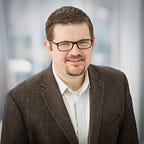500,000 Orchard Scouts
Part of the “Sustainability at Scale” series sponsored by Marrone Bio Innovations
Farming is complex. Consider an orchard:
Biological activity happening everywhere: in the soil, in the trees, on the leaves, and between the rows. All of this biological activity is heavily influenced by temperature, humidity, wind, and the adjacent farms or properties that may be surrounding the orchard.
The various fruits and nuts developing in these orchards are highly susceptible to this biological activity in the forms of insects, fungi, and bacteria. Environmental factors such as water and frost are also a big concern.
To protect these delicate and valuable crops, farmers have monitored conditions extensively. They typically have to pay scouts to walk fields, check traps, take samples, and manually monitor for adverse changes and effects.
Recent advancements in sensor technology as well as machine learning, big data, and artificial intelligence are equipping farmers with tools to more proactively monitor for and address these issues.
I had the chance to interview Michael Gilbert, CEO of Semios, about his company’s precision farming platform for speciality crop producers. They focus primarily on orchard crops. Catch the full interview here:
“Machine learning and big data and artificial intelligence are all this new wave of technology that’s coming that is really only possible when you have a massive data set” says Michael, “Typically, it has its biggest advantage when you have a highly varied data set. We have the four V’s of big data which are volume, velocity, variety, and voracity.”
Farming in an orchard environment definitely qualifies. Michael and his team now have 500,000 sensors in orchards monitoring for data points such as temperature, humidity, dew points, soil moisture, insect pressure and leaf wetness.
The real trick here is not just in collecting this data, but using it to provide actionable insights that the farmer can use effectively while saving time and money. Semios has created a product that collects data every 10 minutes and provides real-time actionable analysis to farmers.
Users of Semios not only benefit from their own data collected, but also through aggregated data from other users of the product. This allows the farmer to be more tuned in with what’s happening and more proactive to address problems before they get out of control.
“The data we’re collecting, which is great for pest management, is the same data you need for disease management. It’s the same data you need for irrigation control, for frost control, for chill portions. We’re now starting to see, for example, how does bloom occur and when does it occur. And so when should you be putting your bees in the orchard? These are all also driven by heat and humidity in some combination.” — Michael Gilbert, CEO of Semios
This technology helps producers be more sustainable in a variety of ways. First, it saves on costs of sending crop scouts out into the field to check traps and take samples. Secondly, farmers can maximize efficiency of inputs by optimizing timing and location of treatments.
This level of precision also opens the door for more sustainable pest management approaches that were too costly to apply to an entire orchard. Pheromones, for example, can be a very effective alternative to chemical pesticides but must be applied in the exact right place at the right time. The data from Semios allows for effective application, and the company even installs pheromone spray cans with some sensors so it can be without even having to re-enter the orchard.
It’s easy to get excited about this technology and how effective this can be in the hands of a capable farmer.
“We are now starting to get into, for example, harvest timing” says Gilbert. “Harvest occurs for several reasons, and they are all data-driven. By collecting all of this data and having really smart people look at the machine learning and setup the algorithms. Then combining that with our growers who tell us what they’re seeing in the orchard, we are going to just really science out why things occur in orchards, and why things happen in Ag. That is by far the most effective way to achieve more sustainable and more profitable farming. You need to have more data to understand what things are occurring and how to best manage it.”
Listen to the full interview with Michael Gilbert of Semios here:
